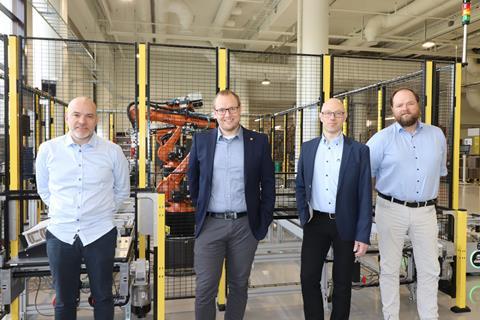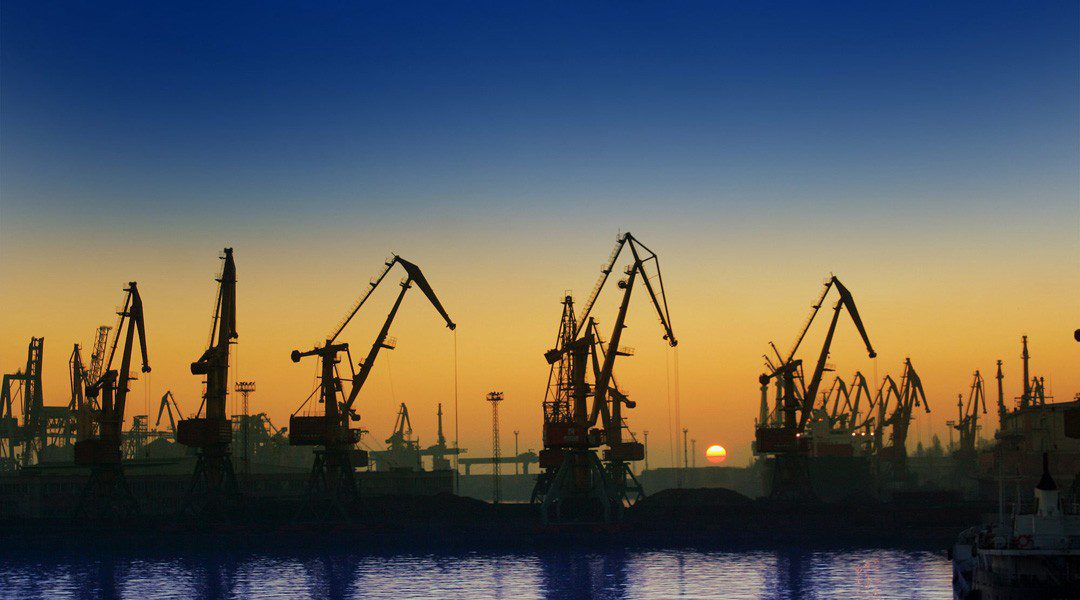“We expect to see ESS systems installed on every vessel powered by alternative fuels in future”, Corvus Energy’s Chief Commercial Officer Halvard Hauso tells The Motorship.
When Corvus Energy’s CCO Halvard Hauso spoke to The Motorship in early February, he was in an ebullient mood.
The long-awaited upswing in the market for maritime energy storage systems (ESS) is beginning pick up pace. The overall market for maritime ESS solutions is expected to more than double in 2022, and will double again before the end of 2024.
As the market leader in supplying ESS systems, Corvus was also expecting to benefit from the growth in the market. “We had a great year for sales in 2021, and expect our sales to double in 2022. If all goes to plan, we expect our sales to double again by 2024,” Hauso said with pride.

Source: Corvus Energy
Halvard Hauso, CCO of Corvus Energy
Looking back, Hauso noted that it was only six months since the 500th vessel or application sale, which had been achieved in just 12 years.
“But if you imagine how many vessels there are in the world, 500 is just the beginning compared with the 60,000 or so vessels in the global fleet. There is a lot to do.”
Corporate investment
The company is in the middle of an expansion to locate sales staff close to growth markets in order to meet the upcoming demand. There are around “15 to 20 countries” around the world where the green shift has arrived where Corvus needs to be.
“We have just opened a joint venture in Japan with Sumitomo. We have opened in Singapore. We have opened in Florida, in addition to Seattle. And we have opened in Denmark, and we are just about to open in the Netherlands.” Technical sales support was available in the Americas, Europe, Singapore and Japan.
A diversified portfolio
The company’s product portfolio was also being expanded, Hauso noted. Corvus’ existing range of different ESS systems had been developed with different operational requirements in mind, once its experience in installing systems had illustrated the limitations of a “one size fits all approach”.
“We have a portfolio of four main batteries, and one is operated for fast charge and discharge, one is for volume based that we can get a lot of energy into a small space, while the last two are optimised for weight. So, and by doing that we can optimise for any vessel, as it is today.”
Hauso continued: “If you’re going to put a 25 MWh [ESS] into a 70-metre offshore supply vessel, [it] needs to do something else as well. So that’s why we developed the Blue Whale battery”.
Progress on fuel cell solution
Hauso was just as keen to talk about the company’s progress in its innovative hybrid PEM fuel cell and ESS solution. The development project was launched in 2021 and seeks to develop marinized hydrogen fuel cell systems (based on world leader Toyota’s existing PEM fuel cell, which was developed for automotive applications.) The Project is a significant undertaking: there is a team of engineers working on the project at Toyota, while Corvus has hired a team of 20 people to ensure that the system can be safely installed below deck on a vessel.

Source: Corvus Energy
Corvus Energy’s management team for the marine fuel cell development project is negotiating approval in principle from DNV on the inherently gas safe fuel cell system. We aim to complete the class approval processes and have sailing pilots in 2023,” Halvard Hauso told The Motorship.
“We are currently in the process to receive the approval in principle from DNV on the inherently gas safe fuel cell system. We aim to complete the class approval processes and have sailing pilots in 2023 and commercially available hydrogen fuel cell systems in 2024”
Market developments
Returning to the market, Hauso noted that while ordering behaviour was changing in several different vessel segments – “the adoption rate is picking up really fast” – some vessel segments were shifting towards battery-hybrid propulsion more rapidly than others.
Hauso gave the example of the tug market, which had seen the rapid adoption of ESS systems and the first orders for full-electric tugs. “We now have close to 10 full-electric tugs, I think – and I would expect to see the majority of harbour tugs ordered with either full-electric or hybrid systems in future.”
“Because of the size of the tug market, and the number of orders placed annually [300-350], the shift towards hybrid-electric is significant for us”.
In addition to the expansion in the number of battery installations, the size of the battery was also increasing Hauso said, citing a recent order from Crowley for a tug with a 6MWh+ ESS.
Zero-emission SOV and CTVs
Looking beyond the harbour tug market, Hauso identified the offshore wind market as a growth segment. “We expect demand for zero-emission SOVs and CTVs for the offshore wind segment to increase in the coming years. I think it will become one of the largest segments in our portfolio because of the pressure for zero-emission vessels to operate out in the wind park”.
If offshore electrical charging [at wind farms] becomes commercially viable, customers could charge pure-electric vessels close to the offshore wind farm. The size of the ESS installation which could reach 20-25 MWh battery in a relatively small vessel, and the growth of the market means that this is expected to become an increasingly relevant market segment for Corvus in the coming years.

Source: Corvus Energy
Kolbjørn Berge, Senior Vice President Global Regulatory Affairs at Corvus Energy
Hauso added that naval architects note hydrogen-fuelled fuel cells could provide baseload for zero-emission crew transfer vessels. The advantage of combining the PEM fuel cell with an ESS is that the ESS could provide peak shaving or load levelling, minimising the requirement to ramp up output from the fuel cell.
“We know it is more efficient for both PEM and SOFC fuel cells to minimise load ramps, so there is a natural compatibility between batteries and the fuel cell systems.”
Short-sea developments
Turning to larger vessels, Hauso noted that the market was prepared for the introduction of shore power charging requirements for Ro-Ro and Ropax vessels in Europe. “The market is really active: the demand for zero emissions while alongside in port and zero emission during the last leg in and out of port has risen sharply.” While ESS systems offer a solution for larger vessels to satisfy these requirements, “the upcoming introduction of OPC requirements will definitely increase demand for energy storage,” Hauso notes. This was an example of where regulation was encouraging ship owners to invest.
Hauso introduced a new colleague, Kolbjørn Berge, Senior Vice President Global Regulatory Affairs, who noted that similar regulatory pressures were affecting other short-sea vessels. “The new government in Norway is finalising plans to force domestic shipping to cut their emissions by 55% towards 2030. This will impose requirements upon offshore vessels and also aquaculture segment to introduce low or zero emissions solutions.”
The regulation will have far-reaching effects on Norway’s aquaculture market, as well as upon its offshore oil and gas sector. “The measures will affect approximately 2,000 vessels in Norway’s aquaculture sector.”
“We are not completely certain about how the rules will be developed. The only thing that’s certain is that the environmental requirements will become stricter,” Kolbjørn concluded.
Alternative fuel developments
Hauso concluded by discussing some of the new areas where battery technology has begun to gain a foothold. The cruise vessel and expeditionary vessel segments remain interesting, ESS systems are particularly well suited to the lower hotel loads typically required by expeditionary vessels.
“Our first large cruise vessel conversion will be completed this year. We got the order late 2019, but installation has been postponed due to Covid-19.
The pure car and truck carrier (PCTC) market represents a separate interesting niche. “We have sold batteries to a couple of PCTC vessels where they support the main engine and ensure that they have a more optimum operational profile on their auxiliary engines.” The solution is particularly applicable to the operational profile of PCTCs, where some of the gensets are only required while loading and discharging the cargo.
Similar progressive shipowners have also identified the opportunity to optimise power consumption on chemical tankers, for example. “By operating a main engine with a PTO, the bowthruster can be powered by the main engine rather than an auxiliary. The battery offers redundancy if there is a problem with the PTO, they have a battery pack that will take over until they can start up the auxiliary.”
Hauso added that there were even greater advantages for vessels powered by LNG or other alternative fuels. “Because the ESS helps to minimise the use of the 4-stroke LNG-fuelled auxiliary engines, the ESS can help with load ramping issues.” These issues will be seen with any of the alternative fuels that are coming. “All of them will have a need for a battery in the future”.





